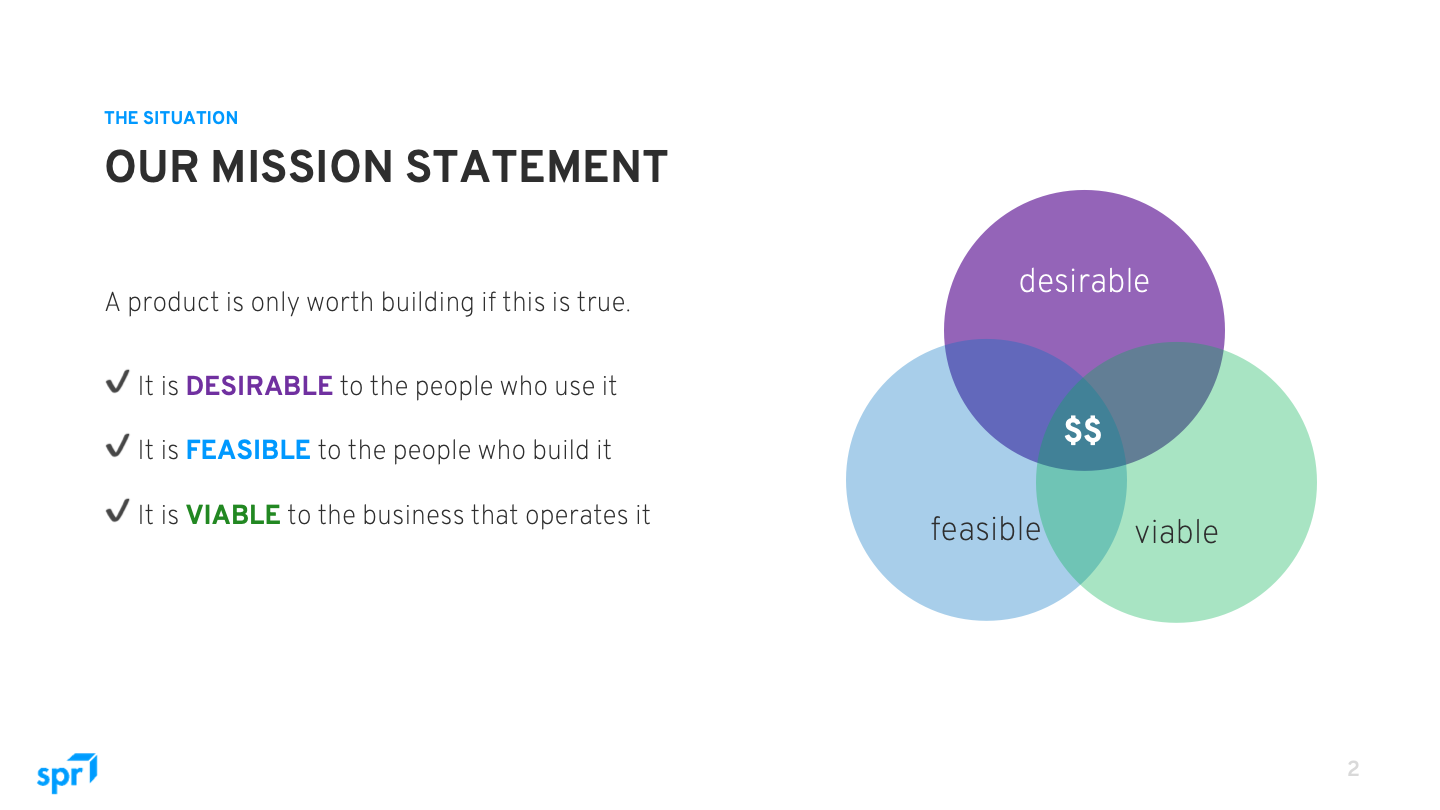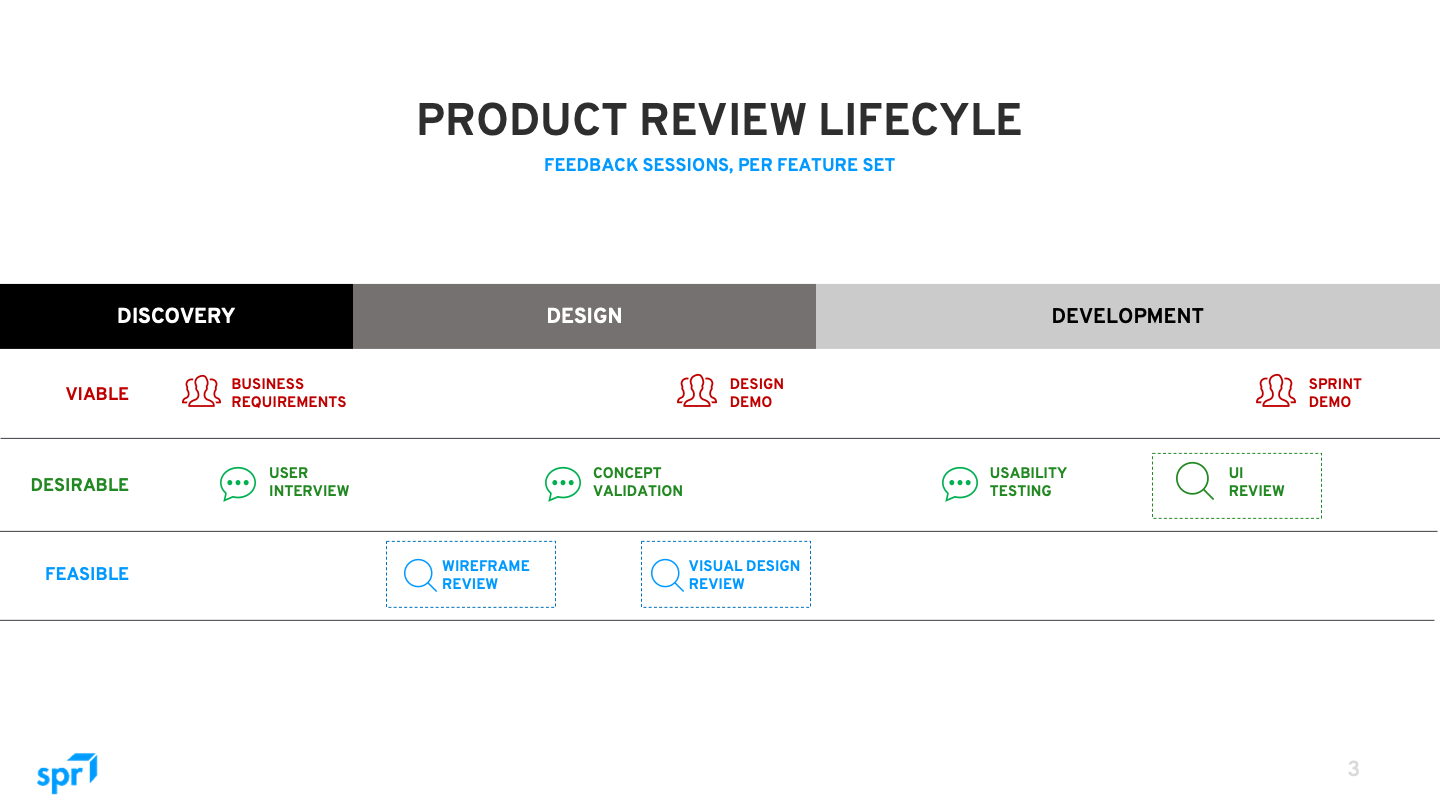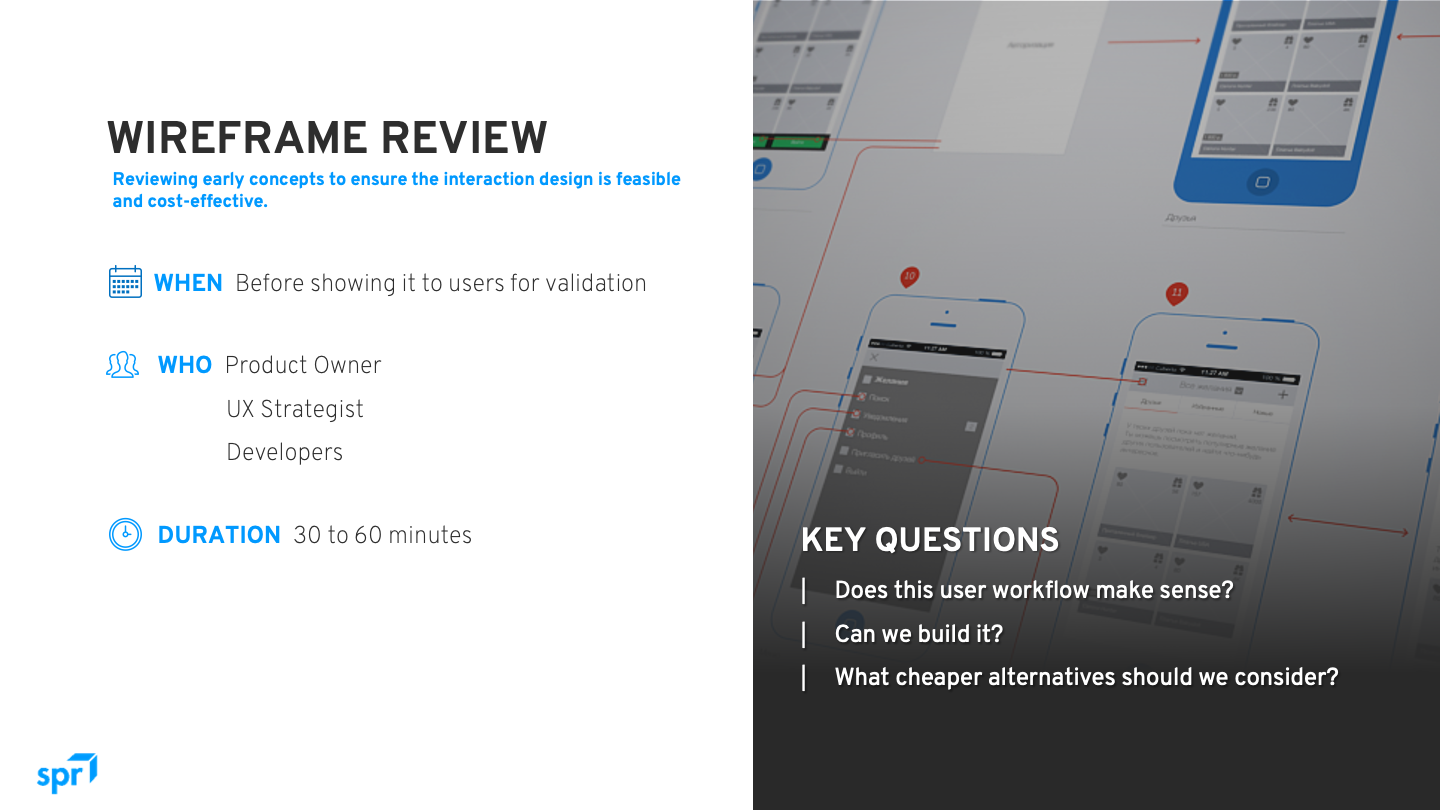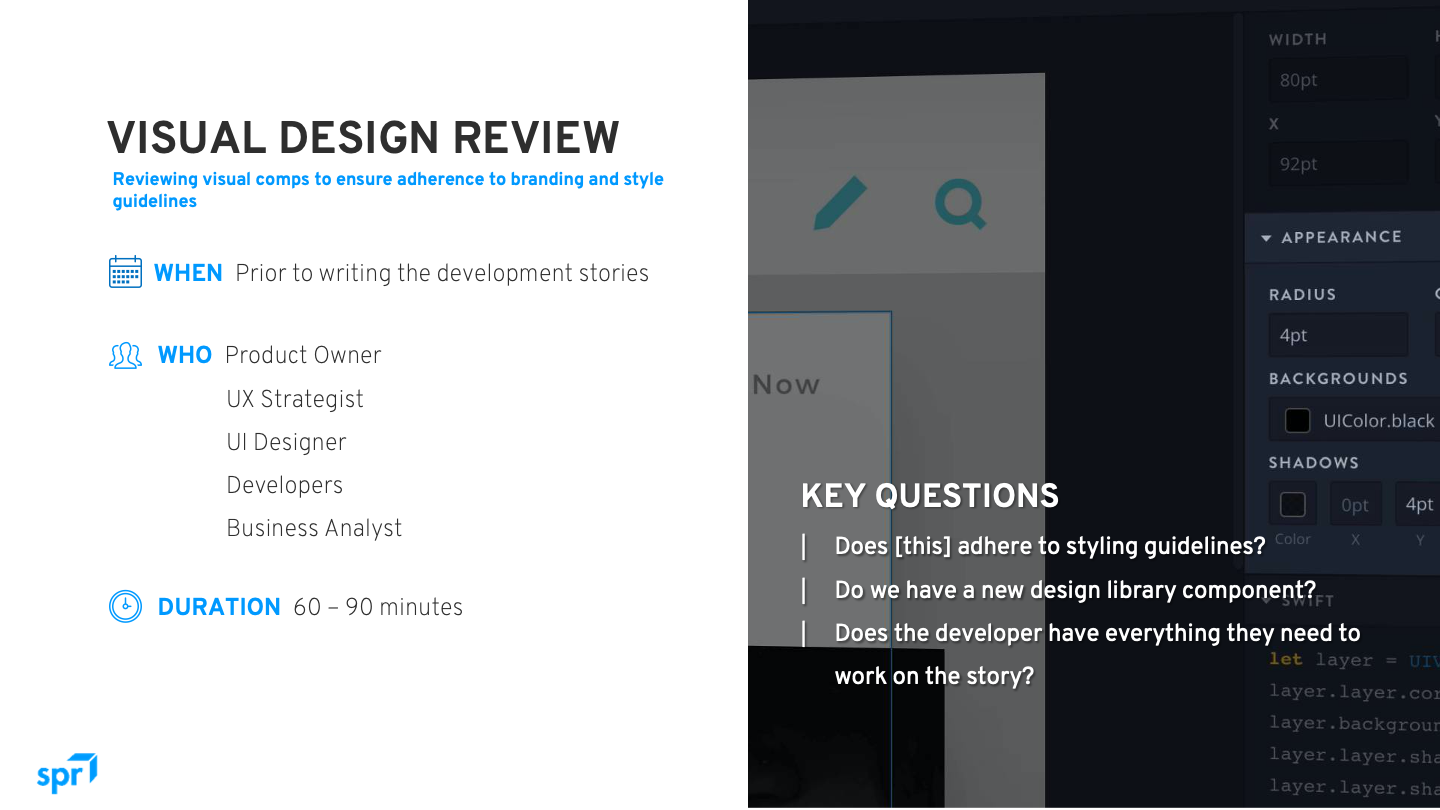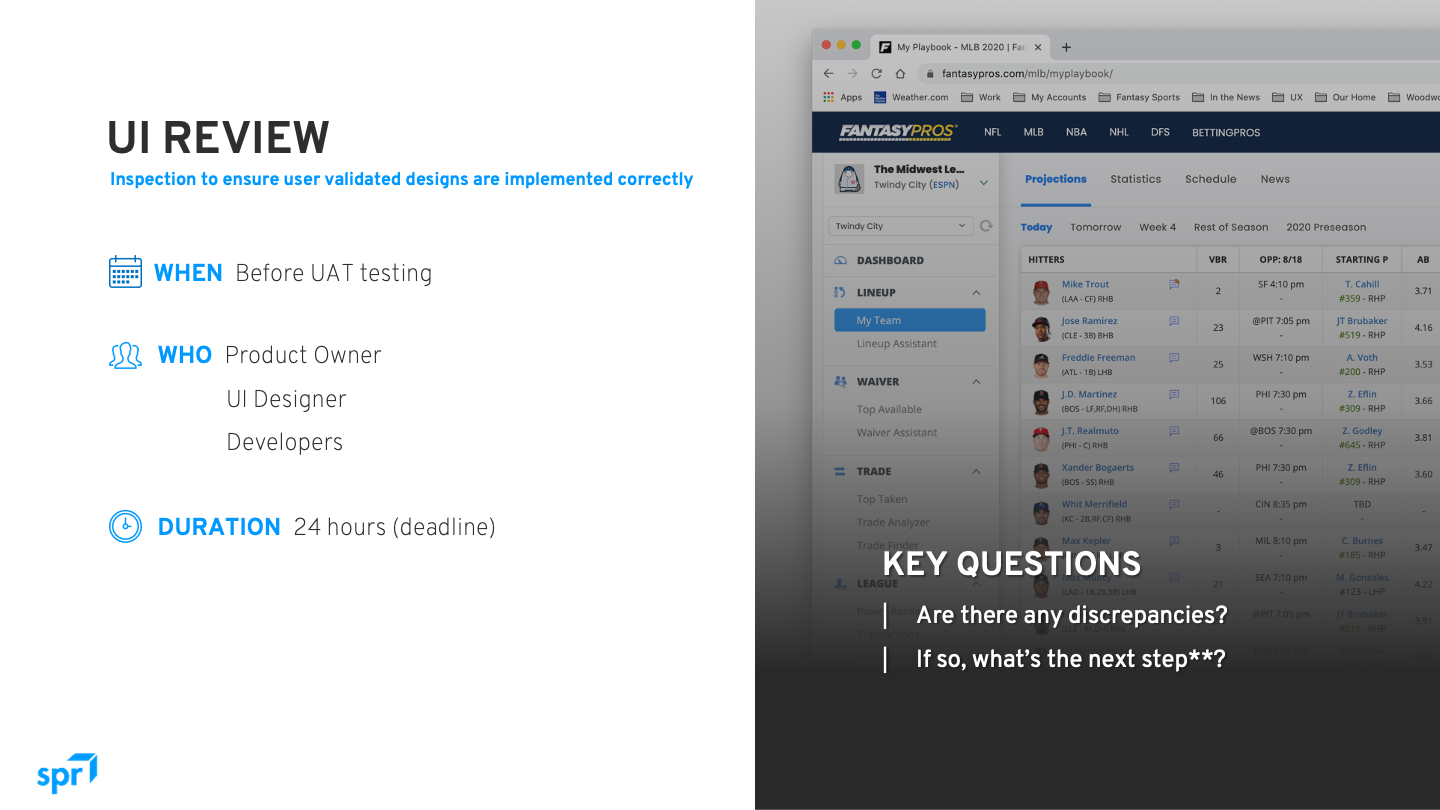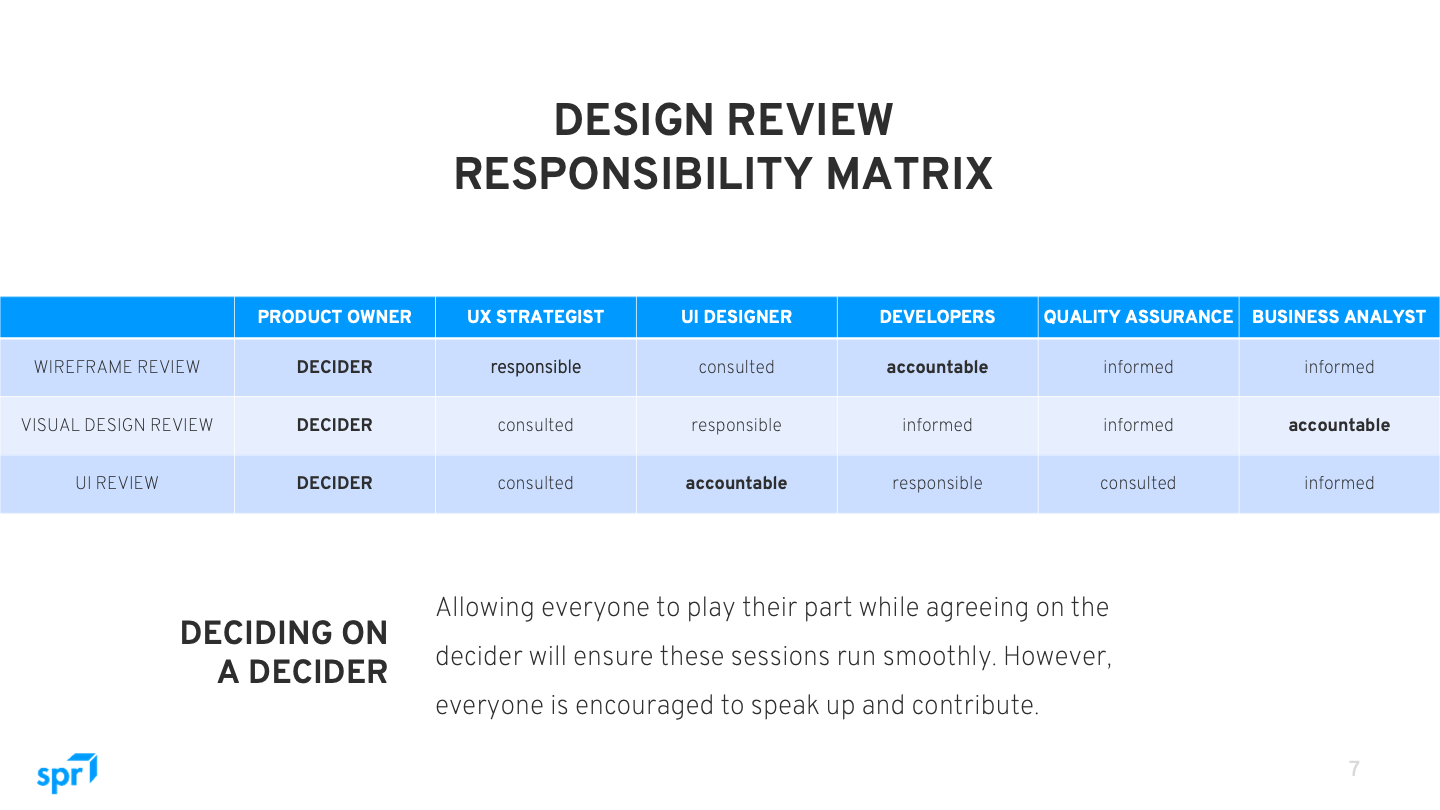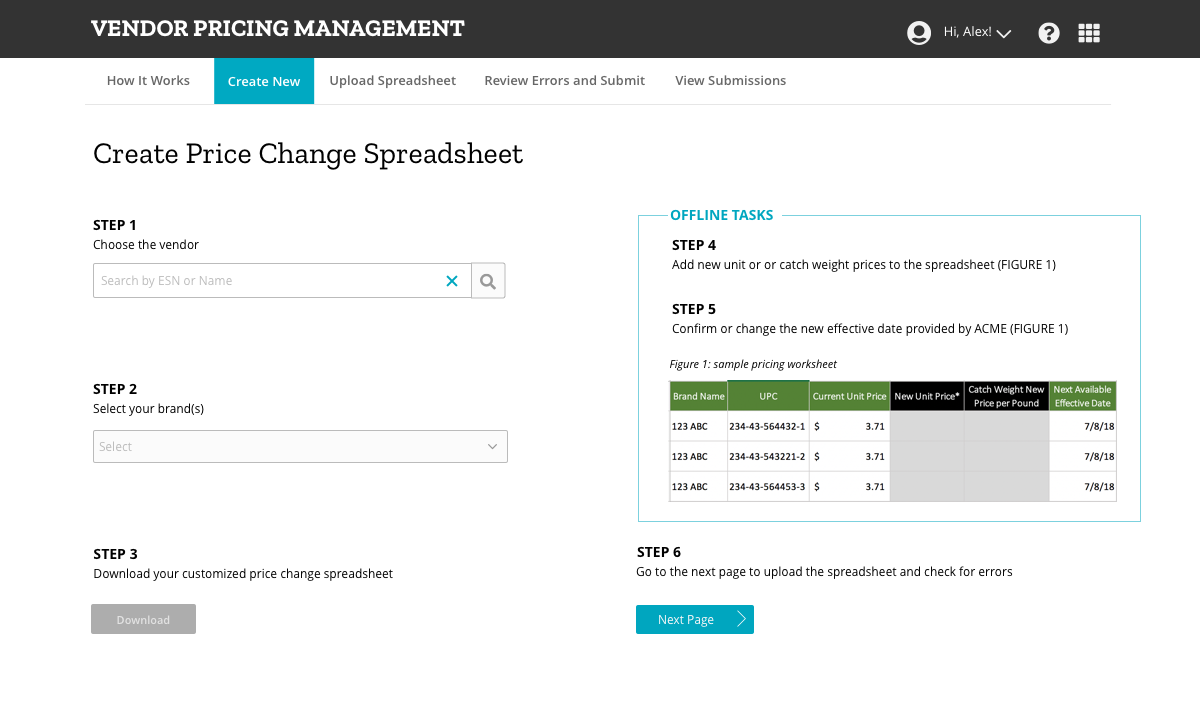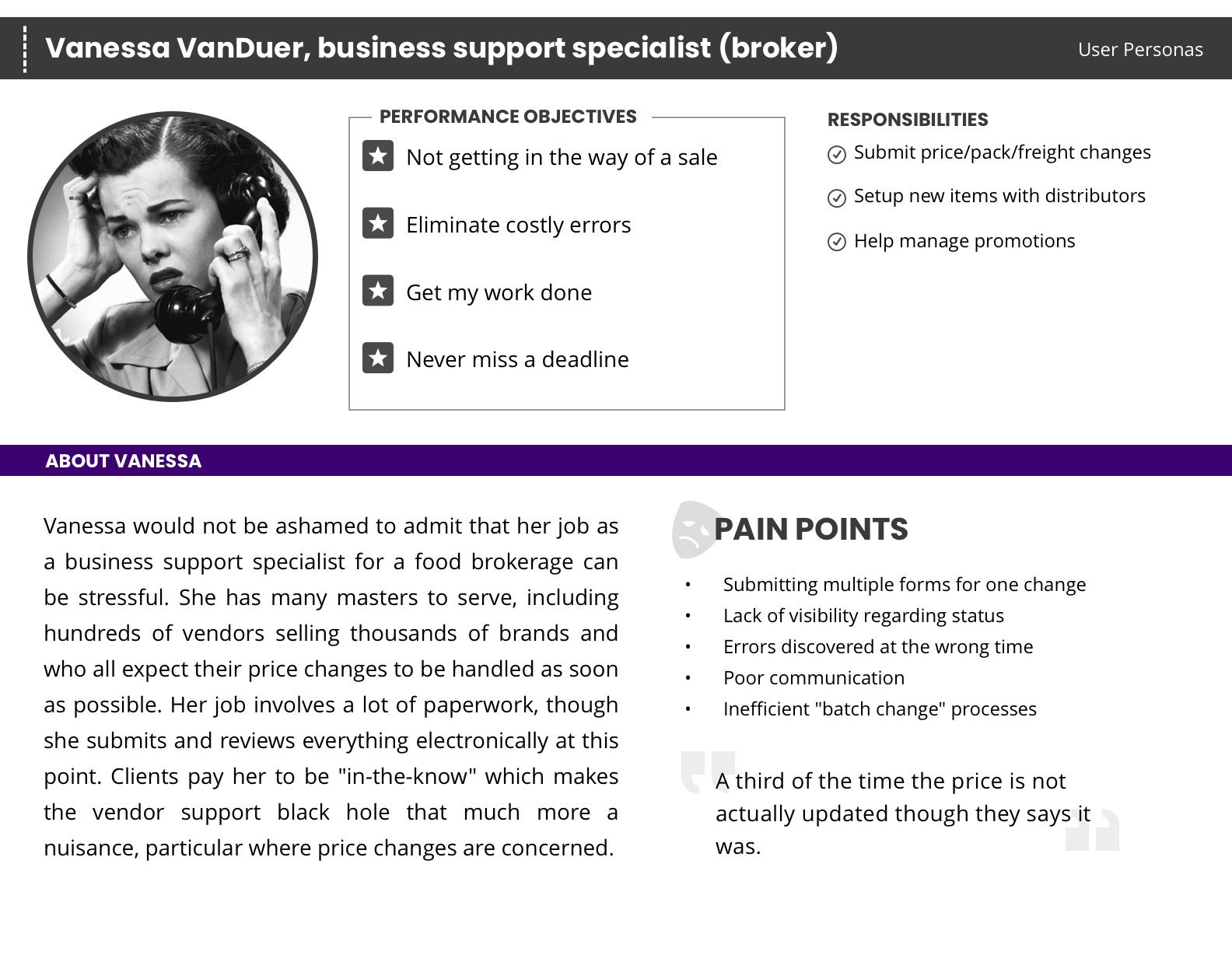RESEARCH + STRATEGY
INVENTORY MANAGEMENT SYSTEM
Or how I made lean UX method and continuous feedback loops standard practice for an agile IT organization
Client
Wholesale Distributor
Duration
18 months
Interface
Responsive Web
ABOUT THE PROJECT
My client, a wholesale goods distributor, needed to overhaul its supplier management systems as part of a digital transformation. The goal was to reduce costly product price errors and free up back-office staff for more valued-added vendor management activities. As the beginning of an eventual in-house design team, I was responsible for leading the discovery and design of the new inventory management system. I also oversaw a team of designers on other workstreams and developed an approach to lean UX still in use today.
OTHER CONSTRAINTS AND CONSIDERATIONS
SKEPTICISM
Past experiences with designers left my client worried we may not deliver as promised
AGILE DEVELOPMENT
All design work needed to adhere to the typical agile sprint cadance
BUILDING WHILE SAILING
Intense pressure to start development early and fix any issues along the way
MY ROLE
I was the UX lead and partner to my product owner on a specific workstream. I did the research and conceptual design, and oversaw the output of a team of visual designers. Because the scope of our engagement included helping my client build and hire an in-house design team, I also served as the interim UX director until an permanent hire was found.
KEY ACTIVITIES
- RESEARCH 50%
- DATA SYNTHESIS 25%
- TEAM MANAGEMENT 25%
MY APPROACH
I used my project as an incubator for many of the methods and processes put in place to make research and design work within the biweekly cadence of agile development sprints. The first problem-to-solve was to how to scope design work into smaller chunks while still allowing for adequate discovery and user validation. The second, and perhaps most important one, was developing a shared understanding across the entire product team about what we are building and why.
PROJECT MANAGEMENT
AGILE DESIGN SPRINTS
Designers can sometimes overpromise and underdeliver during a sprint when they agree to do the HOME page, for example, without the details on what needs to be included and why. I put in place a series of activities and ceremonies to ensure enough work is consistently ready to keep the development team busy. Specifically, I instituted a design story sizing exercise on day two of our two-week sprints that ensure promise made would be promises kept.
Design Sprint Schedule
TEAM COLLABORATION
DESIGN REVIEWS
Despite working in the same cubrihood, developer/designer collaboration can still be challenging on an agile team. I found that critical feedback about technical feasibility or other constraints is hard to come by without frequent, albeit lightweight, occasions to get everyone in a room and pick apart those initial design. I put in place a pair of design reviews each sprint to help formalize this collaboration and ensure a shared understanding of what we were building.
Design Review: An Implementation Guide
USER FEEDBACK
END USER COHORT
Continuous user feedback is an important component of the Agile Manifesto. The trick is in figuring out how to turn it on and off at a moment’s notice, given the pace of agile development. Instead of attempting to recruit fresh participants for biweekly usability testing, we built a cohort of seven local suppliers who did business with myclient. In exchange for the chance to help shape how the web app works, these suppliers agreed to let us come to their office and watch them work or review early concepts whenever needed.
DESIGN RECOMMENDATIONS
DESIGN RECOMMENDATIONS
A BATCHED JOB
We assumed that the price changes our system was designed to process happened on an item-by-item basis. The price of eggs goes up and a supplier makes the one-off change in the system (or so the thinking went). However, in observing how our cohort managed price changes, we quickly learned that the more likely scenario is a batch submission that impacted 500 to 1000 products at a time. Asking users to change prices one at a time was a no-starter
Example: User Journey Map
DESIGN RECOMMENDATIONS
WORKS WITH EXCEL
To reduce the pricing errors than happen when transposing data from a spreadsheet into a web form field, we designed a workflow where the supplier could upload their existing spreadsheet. This suggestion met with some initial resistance internal stakeholders who believed Excel was part of the problem. We were able to provide evidence from our user cohort that Excel was, in fact, part of the solution.
example: Wireframe
DESIGN RECOMMENDATIONS
FASTER ERROR HANDLING
The system checks for any data and logic errors, such as a price increase greater than 50%, and includes a step for the user to fix them prior to final submission. Previously, it took weeks to identify the kinds of errors that held up approval – to the frustration of suppliers and employees alike.
example: User Persona
